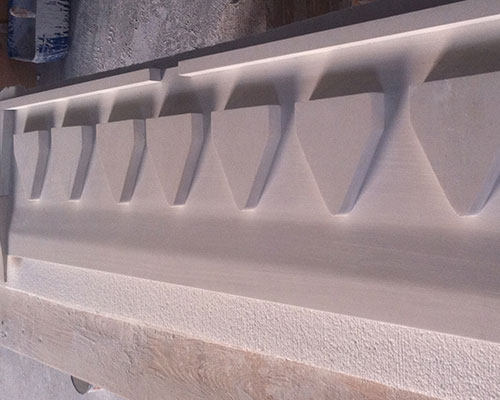Cast rolling nozzles are calcined at high temperatures and do not contain organic matter. The shrinkage rate at 800°C is zero, and it can be used in various twin-roll continuous casting machines. Slag-free ceramic fiber soft casting nozzles are used to produce aluminum plates and aluminum foils for pharmaceutical and food packaging materials. The hard casting nozzle made of ceramic fiber and imported filler has the characteristics of high strength, smooth surface and wear resistance. It is suitable for the casting and rolling of high-speed aluminum plates.
The casting nozzle is made of high-quality materials (without sodium silicate), which has good non-stick aluminum, low thermal conductivity, good high temperature stability, uniform density, smooth surface, and accurate size.
The strip-shaped protrusions that appear along the length of the surface of the aluminum product are surface defects of the aluminum product. The side of the product is single-sided ears, and both sides are double-sided ears. Some run through the entire product, but there are also partial, intermittent or periodic. Ears that appear on the surface of the product should be worn away.

Cast rolling nozzles cracked the ears because the metal is overfilled in the finished hole during the rolling process, and the excess metal is squeezed into the roll gap. The specific reasons are as follows:
(1) Improper pass design, improper adjustment of the rolling mill or severe wear of the finished hole, resulting in a large number of finished holes and double-sided ears;
(2) The entrance guide rail of the finished hole is installed improperly, is not tight, the clearance is too large, or the type of the entrance hole is not easy to produce single-sided ears or double-sided broken ears;
(3) The temperature of the rolled piece is low or the temperature difference across the entire length is large;
(4) Poor adjustment of the continuous rolling mill.
(5) Cutting the metal in the front hole of the finished product, convex hulls appear on the surface of the rolled piece, and periodic ears are generated during rolling.
Prevention and elimination methods are:
(1) Choose an appropriate width factor and perfect the hole design;
(2) Strengthen the adjustment operation of the rolling mill, and reasonably distribute the reduction amount;
(3) Install the finished hole entrance rail correctly;
(4) Replace severely worn wear grooves;
(5) Improve the heating quality of the billet to reach a uniform temperature.

